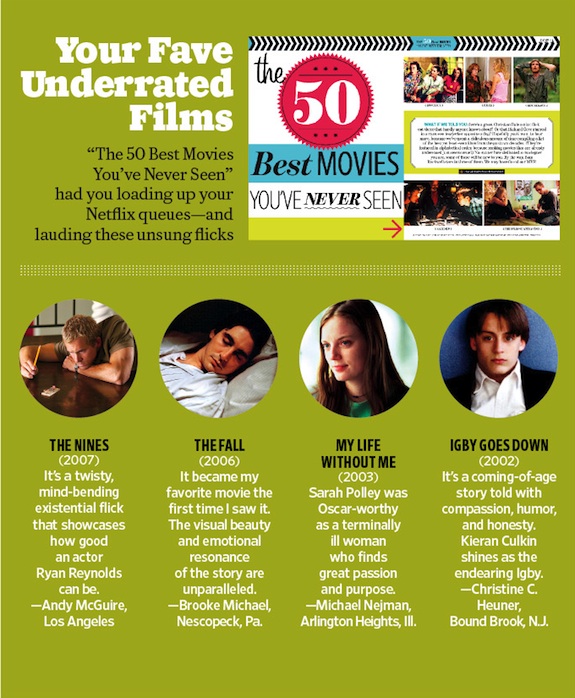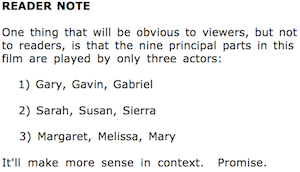Alex Wurman, who composed the music for my film The Nines, has the soundtrack up on SoundCloud. [Take a listen](https://soundcloud.com/alex-wurman/sets/the-nines-score).
The composer often comes on board a project while it’s in post, but for The Nines, I needed Alex to write the main theme of the movie before we’d shot a frame. That’s because during one scene in Part Two, Gavin (Ryan Reynolds) plays the theme on the piano. It’s a major plot point, and I knew we couldn’t fake it. So Alex and I spent a few days hashing out the musical idea of the story.
When talking with a specialist (a composer, a cinematographer, a choreographer), I’ve found it best to describe feelings rather than functions, using similes rather than concrete vocabulary. So I said things like:
* broken clockwork
* skimming across a summer lake, but there’s something dark under water
* an unanswerable question
* something half-remembered, and you’re not sure if it was something positive or negative
This got us to the main theme, called [Knowing](https://soundcloud.com/alex-wurman/knowing-theme-1?in=alex-wurman/sets/the-nines-score):
The theme shows up all over the movie, often on piano, but sometimes pushed to other instruments and other tempos.
I love Alex’s music in The Nines, but if I had it to do all over again, I would have found a way to get bigger with the music at the end. Right now, it all feels a little too delicate and same-same.
We had a very limited budget, but the visuals would have better served with some serious strings. In my head, I can hear this theme re-orchestrated, and it’s what the film wants: the boldest expression of the musical question and its answer. To achieve that, I would have re-prioritized other elements to free up some money.

